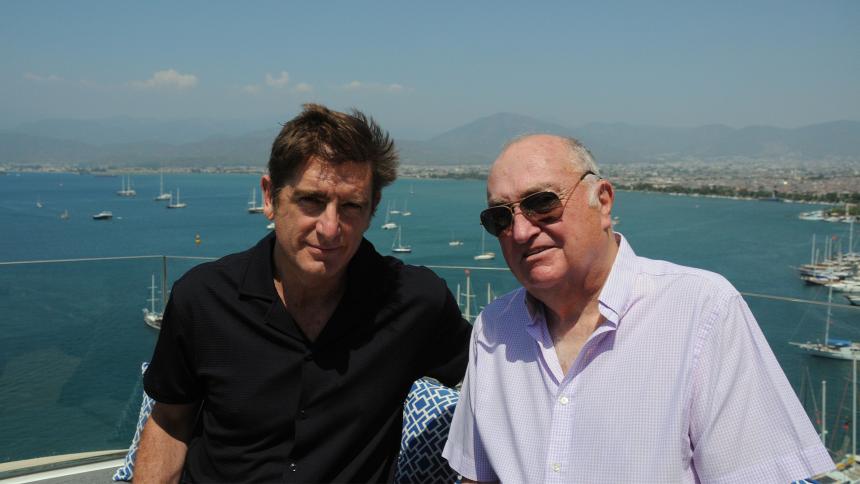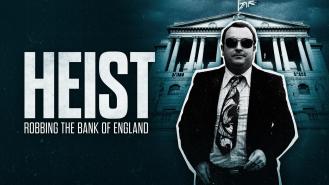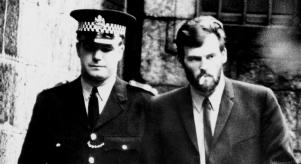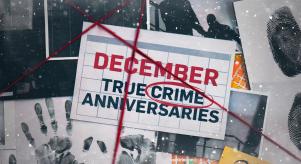
Marcel Theroux: 'It's like a Guy Ritchie movie - with real people and real stakes'
Marcel Theroux returns to Crime+Investigation with a brand-new documentary that reveals the inside story of the 1990 City Bonds heist, history’s largest street robbery that you’ve probably never heard of. Heist: Robbing the Bank of England is a two-part series that traces the £292 million in bearer bonds stolen from a briefcase, featuring interviews with experts and insiders, including the only person ever convicted in connection to this crime, Keith Cheeseman.
In this guest article, Marcel walks us through the bizarre twists of the story, explains why it is a case that deserves to be talked about and reveals some behind-the-scenes secrets. Heist: Robbing the Bank of England starts Monday, 3rd November on Crime+Investigation.
After making The Eunuch Maker last year for Crime+Investigation, I and the team I had worked with were a bit shell-shocked. The Eunuch Maker is a jaw-dropping story. It’s truly unforgettable, fascinating, but also grim. I remember being at the Old Bailey during Marius Gustavson’s trial and seeing the detectives who had worked on the case. They looked absolutely wrung-out. The evidence they had had to look at must have been appalling.
We had been developing the Bank of England story for a while. And there was a feeling among the team that it would be a great antidote to The Eunuch Maker. It is a true crime story, but it has colour and glamour and no severed body parts.
I was also drawn to it because I have very fond feelings for the London where it happened. I was 22 years old in 1990. The capital was still a place of smoky pubs, working public telephones, and newspapers blowing around Tube carriages. It was a time where an entire evening could be ruined if you failed to meet your friends at the appointed place. Without a mobile phone, you either kept to the plan, or had to go home early to watch Minder.
The resolutely analogue nature of the era was also what made the bearer bonds robbery possible. Amazingly, men with briefcases were carrying around huge sums of money in financial instruments that, in the right hands, were as good as cash.
As we looked into the story, I found it more and more intriguing. It seems incredible to me that this crime is not better known. £292 million - and according to Keith Cheeseman, one of the conspirators, the true value of the bonds was even higher - is a mind-boggling sum of money.
It’s also very strange that, to this day, no one is sure who ordered the crime and no one, other than Cheeseman, served any time for their involvement.
It seems likely to me - as we explain in the programme - that there was some connection between the commission of the robbery and Irish Republicans. Anyone my age or older will remember the ambient threat of IRA bombs in London. It’s the reason that for years there were no bins on the London Underground.
The detectives we interviewed didn’t say it in quite so many words, but hints we picked up over the course of making the programme made it clear that their biggest worry was that the money was intended to end up in the hands of terrorists.
The official line is that the investigation was a massive success. The detectives we interviewed are very proud of their work. In America, their colleagues in the FBI immediately shut down the laundering of the bonds.
However, according to Keith Cheeseman, now living comfortably in retirement on the Turkish Riviera, the total number of bearer bonds was actually higher than was reported. He claims their value was £420 million and that someone - not him - pocketed the difference.
It seems unlikely, but who knows? Keith is a convicted fraudster with a very colourful past. He used to be the chairman of Dunstable Town Football Club, where he had the brilliant idea of signing George Best. It was a very Keith-like publicity stunt. He was also using his position at the club to defraud banks. He spoke very frankly to us about his past and his involvement in the crime. I hope that people will watch the show and make up their own minds about what he says.
The lesson of the bearer bonds robbery was learned very quickly by British banks. It would have happened anyway, but the experience accelerated the transition to electronic banking. One delicious irony of this is that Keith Cheeseman, conspirator in the bearer bonds crime, was also a pioneer in electronic banking fraud. In fact, it was his efforts to siphon money electronically out of bank accounts that drew the police to his hideaway in the Canary Islands, and from there to face justice in America.
While it happened in living memory, the City bonds robbery is very much a heist of its time. Like BT phone cards and the Sinclair C5, paper financial instruments belong firmly to the 20th century. Yet the robbery at the Louvre shows that the ingredients of the classic heist remain basically unchanged.
For a large part of my life, true crime was a guilty pleasure. As viewers’ choices have expanded with the advent of cable television and the internet, it’s become clear that I’m not alone. A huge number of people share my guilty pleasure. However, I still find myself feeling a bit defensive when I talk about my enthusiasm for true crime. I like to remind people that the literature begins with true crime: theft and fratricide in Genesis; road rage and murder in Oedipus Rex.
The City bonds robbery is now a case that I have a special affection for and that I would recommend to people - thinking of my mum here - who are not sure if they like true crime.
Yes, regrettably, a number of people did lose their lives: Patrick Thomas, the mugger who was hired to steal the bonds; Mark Osborne, the Texan banker who was caught trying to launder them. But the story itself feels like it could be a Guy Ritchie movie: it’s got an extraordinary cast of characters, clearly demarcated good guys and bad guys, and unlucky people who were just caught up in the middle.
One particular moment of making this series stays with me and for reasons that have very little do with the actual story. One of the senior detectives on the case was a man called Dick Keating. Dick helped mastermind the recovery of the bonds. Today he is retired and suffering from dementia. Sadly, I have personal experience of dementia in my family and I know what an awful thing it is. But Dick’s wife was adamant that we should do the interview. We interviewed Dick in the garden of his house in north London, with a view out toward the city that he had policed. For a brief moment, as we talked, his memories came back to him clearly. He had the details of the case at his fingertips and he was a high-flying detective once again. That was a lovely moment.
Heist: Robbing the Bank of England starts Monday, 3rd November on Crime+Investigation.








